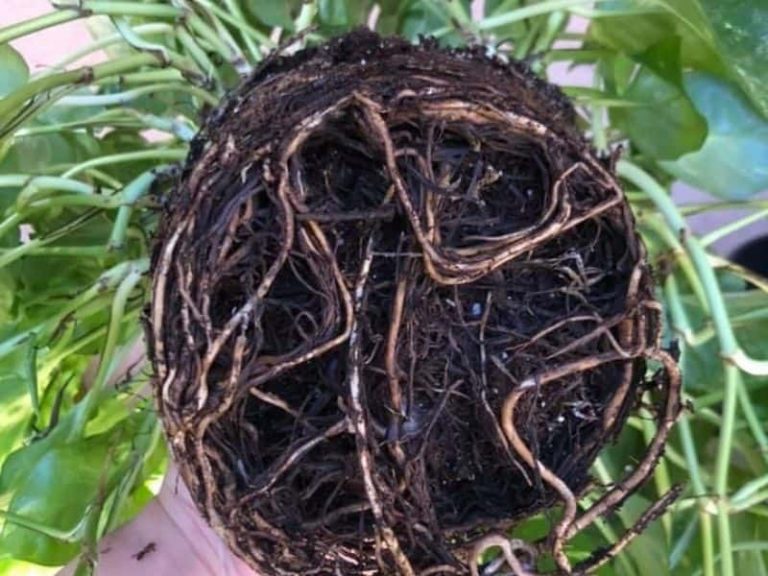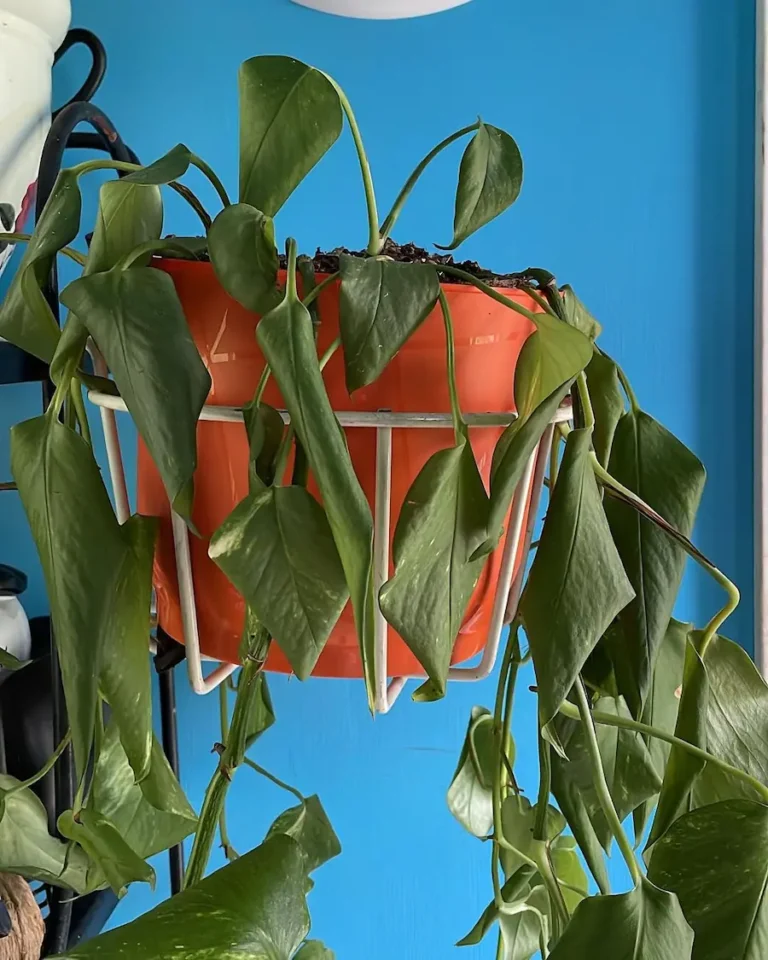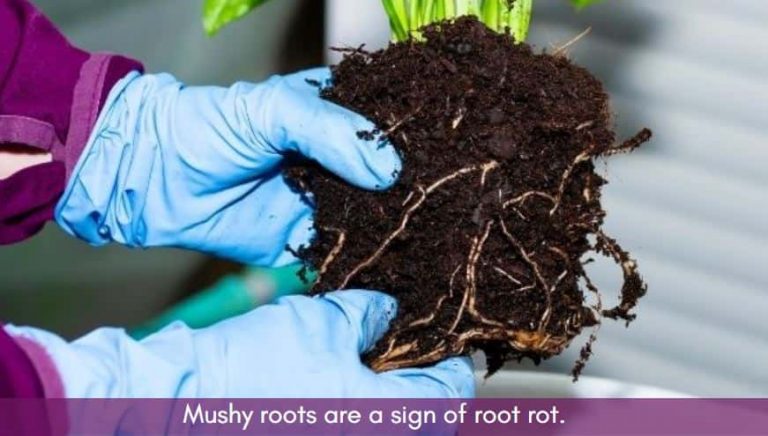Pothos Leaves Curling [Causes + Easy Ways to Fix Leaf Curl]
Pothos varieties are arguably some of the most beautiful houseplants you can ever have – but not when the leaves start to shrivel and curl downwards. Curled leaves are usually a sign that your houseplant is under distress. But what causes of pothos leaves to start curling, and how can you fix the problem?

Pothos leaves curl because of underwatering, overwatering, too much fertilizer, or pests. Leaves can curl for the plant to retain moisture in high temperatures. To stop the curling, water the pothos to keep the soil moist, repot it if the soil is waterlogged, flush out excess fertilizer, or treat for pests on the curling leaves.
Any type of pothos can suffer from leaf curl if not well taken care of. This includes satin pothos, neon pothos, satin pothos, and any other type of pothos.
Before you start to apply any of the fixes to stop the leaves of your pothos plant from curling, you first need to identify the exact reason why the leaves are wilting and changing their usual shape.
Why are the leaves of my pothos curling?
When the leaves of most indoor plants are curling, the reasons can come down to watering problems, improper temperature and humidity, soil issues, and probably pests eating away and affecting the leaves.
Here are the reasons why pothos leaves start to curl and how to identify each of the causes:
| Cause of curling | Best fix |
| Underwatering | Water to keep the soil moist. Allow soil to dry out between waterings. |
| Overwatering | Overwatering can be remedied by spacing out your usual watering pattern. Use well-draining soil in the pot. |
| High temperature | Grow pothos in rooms with 65-85 ºF. |
| Pests and diseases | Treat fungal diseases with fungicide, and eliminate pests with with vinegar spray or alcohol swabs. |
| Direct sunlight | Move pothos to a partially shaded area or provide indirect light. |
Underwatering
Like peace lilies and other houseplants, pothos is sensitive to watering routines. When the soil in the pot dries up, pothos will start to show signs of drought or underwatering. The signs will include leaves curling on the edges, wilting, and sometimes yellowing.
The fact that pothos is a low-maintenance plant doesn’t mean that you can just forsake it and still expect it to thrive. Underwatering is usually the main reason why pothos leaves start to curl, as they naturally adjust to better retain the little moisture that’s available. The curling is usually followed by drooping and wilting.
Overwatering
On the flipside, overwatering your pothos can also trigger the curling of leaves. When there’s excess water in the soil in which your pothos grows, the water inhibits oxygen supply to the plant’s roots.
Consequently, the pothos roots start to rot, leading to a disruption in the supply of essential nutrients – water included – to the stems and leaves. The leaves respond by curling to retain the little water they have left, much in the same way as when underwatered.
In a sense, therefore, overwatering has the same effect as underwatering.
Excessive fertilizer
If your pothos leaves are curling downwards at the tips and the leaves are changing to darker shade of green, the most likely cause is too much fertilizer salts in the soil.
Another way to identify if leaf curling has been caused by overfeeding is if the leaves are unusually small. Overfeeding results from excessive use of fertilizers, or applying fertilizer way too frequently than is needed by the plant.
To check whether your Pothos leaves are starting to curl due to excess fertilizer in the soil, check for other signs of overfeeding, including:
- Root rot.
- Leaf yellowing or leaves turning brown with spots
- Presence of crusty or white sections on top of the soil.
- Leaves wilting and falling off.
Extremely high temperatures
Curling and wilting is common when temperatures are high as the plant tries to adapt to excessive moisture loss.
Pothos are best grown between the temperature ranges of 60-degrees Fahrenheit to 85-degrees Fahrenheit. If the room temperatures exceed this range, leaf curling is likely to occur as a natural response to the temperature stress.
The leaves of pothos will start to curl down especially at the tips if the temperature is too high. Pothos prefer temperatures in the range of 65-85 ºF to grow healthy. This is especially true for golden pothos and satin pothos varieties.
Light problems
When exposed to too little or too much light for prolonged time periods, you’ll start noticing a curling effect on the foliage of your pothos. In conditions of minimal light, you’ll notice the leaves curling in the direction of the light source. This is much unlike the appearance of healthy pothos leaves grown under sufficient light conditions- as they’re usually flat and wide.
Meanwhile, leaves that are curling away from the light source are an indicator of excessive light exposure.
Pothos does not like direct sunlight but can do well in a variety of light conditions falling in the range of low light to moderate indoor light. When grown outdoors, full shade or partial shade is great for your plant to thrive.
Disease or pest infestation
Various plant diseases and pests can also cause your pothos leaves to curl/droop. These pests feed on the plant sap from the leaves, causing the leaves to curl.
Common pests that affect satin pothos, golden pothos, and other varieties include mealybugs, scale insects, and spider mites. These can eat away at the leaves and cause curling.
Common fungal and bacterial diseases that can cause the leaves of your pothos plant to curl include leaf spot, root rot, and blight.
How to stop pothos leaves from curling
To stop your Pothos leaves from curling, becoming limp, wilting, and falling off, ensure the following:
Avoid Underwatering
Curling leaves can be corrected if identified early and the pothos plant is watered immediately. Also, to avoid underwatering in future, take note on how long it takes for the soil to dry out after watering.
- Wait for the soil to dry out before watering.
- Keep the soil moist to avoid overwatering.
- Use watering globes to prevent the soil from staying too dry for long.
Then, set your watering schedule according to the timeline you make. Finally, consider adjusting your watering schedule as the seasons change, as pothos require less water during the colder seasons and more during the warm growth seasons.
Avoid overwatering
Having drainage holes on the sides of your growing pots will help with drainage of excess water before it can affect root health. Alternatively, you can install a drainage tray fixture underneath your pots.
To fix curling caused by overwatering, drain the soil completely by creating drainage holes on the planter. Alternatively, remove the plant from the pot and get rid of the soggy soil. Repot with a clean potting mix (preferrably well draining soil).
Avoid plant overfeeding
To avoid overfeeding your pothos, ensure that you apply fertilizer no more than twice within a single year. However, if your soil is already overloaded with excess nutrient salts from excessive use of fertilizer, your best play would be to repot the plant in fresh soil.
Still- if you suspect the fertilizer build up isn’t that bad, you can try flushing out the surplus salts by repeatedly drenching the soil with water.
Provide ideal lighting
If your Pothos leaves are curling towards the light source, move the plant to a spot that’s better lit.
On the other hand, if they’re curling away from the light source, move them to a spot that receives less direct light. Better yet, you can use a grow bulb to ensure your plants receive an adequate, controlled amount of lighting.
Use pesticides
If you suspect the curling leaves are due to a pest infestation, reach out to your local extension office for advice on appropriate pesticides. Avoid using home-made solutions as these may be toxic to your Pothos plant as well. If insects are the problem, apply some rubbing alcohol to keep them away.
Is my pothos dying when leaves start to curl?
Not necessarily. Curling leaves is usually one of the preliminary signs that there’s a problem. Therefore- if corrected immediately, your Pothos have a survival chance. However, if left untreated, the leaves go from curling, to being limp, to wilting, and finally dying and dropping off.
References
- University of Florida, College of Agricultural and Life Sciences: Potho Production Guide
- Pennstate Extension: Pothos diseases







![Pothos vs. Philodendron: Differences [Pictures + Identification]](https://gardenine.com/wp-content/uploads/2020/12/Pothos-vs-Philodendron-leaf-shape-and-texture-768x576.jpg)